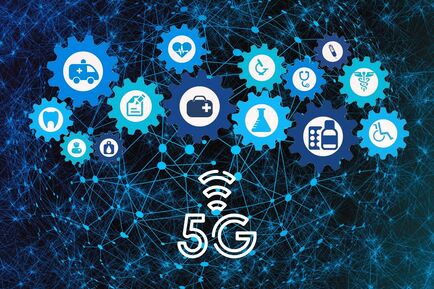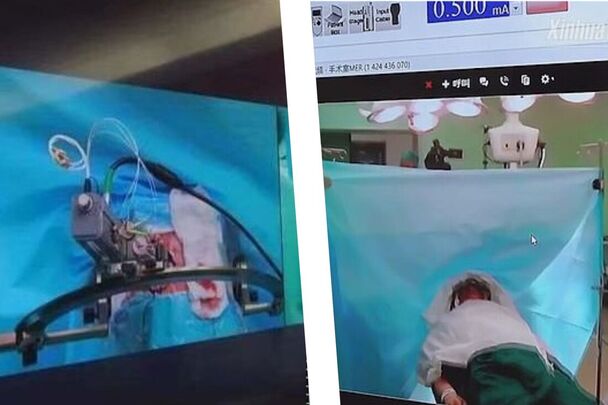Author: Prof K GanapathyDirector Apollo Telemedicine Networking Foundation, Apollo Tele Health Services | Distinguished Visiting Professor IIT Kanpur | Distinguished Professor The Tamilnadu Dr MGR Medical University | Emeritus Professor National Academy of Medical Sciences  5G is the fifth generation of wireless communication technology, promising faster data transfer speeds, lower latency (round trip latency >10 milliseconds), increased network capacity (1 million devices per sq km), 99.999% network reliability and battery life of up to 10 years for IoT devices. There is considerable hype in the media that deployment of 5G will revolutionize healthcare by enabling new medical applications and improving existing ones. Using Edge computing, 5G Data can be processed closer to where it is generated. IoMT (Internet of Medical Things) devices generate huge amounts of data. Cloud computing can provide the necessary infrastructure to process and analyze this data. Faster transmission of data will enable more efficient storage in the cloud. Accessing more bandwidth and computing resources, and providing infrastructure to enable scalability will now be less problematic. No doubt clarity of images transmitted will be better and the immersive experience in video conferencing will be an all-time high. Mammograms, CT, MRI, and ultrasound images generate large amounts of data. High-speed transfer and processing will save a few minutes. Onboard cameras, camera-based Headgear, and ‘Body Cams’ for paramedics can transmit patient data to hospitals in real-time using ultra-fast and low-latency 5G connected ambulances, with medical equipment, patient monitoring applications and telemetry devices that ensure excellent pre-hospital management. 5G can facilitate real-time control of medical robots, enabling precise and safe interventions in performing complex procedures. 5G enables faster and more efficient data transfer, facilitating clinical trials and drug development, as these require the collection of large amounts of data from multiple sources. The media loves dramatising “telesurgery” – the use of 5G in enabling remote surgical procedures. The world’s first remote brain surgery using 5G was conducted in March 2019. Deep Brain Stimulation was performed for a Parkinsonian patient, with the surgeon 3000 km away. In India there have been sporadic anecdotal reports of the use of 5G in remote interventional procedures, The sceptic would wonder why the patient could not go to where the surgeon is located!!! In May 2021, the Thoracic Surgery Education Group enabled 200 thoracic surgeons to access a virtual environment (VE) wearing a head-mounted display (HMD). Discussions in real-time occurred while observing surgery in a VE. Moving the mouse, every corner of the Operation Theatre (OT) was visible to surgeons from different continents. 3D glasses enabled viewing of High Resolution 3D images. Pathologists could display microscopic images on the large screen of the OT and the surgeon could listen to pathologic findings in real-time & share opinions. I believe that 5G assisted telementoring and telemonitoring is more important, doable and necessary than the media hyped “telesurgery”. The healthcare “industry” is generally more conservative in jumping on to the bandwagon, in deploying future-ready technology. Interoperability, portability, stakeholder customization, human factors (skills, resistance, distrust, cyber-attacks), legislation and regulations need to be factored in. The adoption of any new technology to a large extent depends on the return on investment. Making a product cost effective in turn depends on scalability and mass deployment. Now that the sales pitch is over, as an old fashioned clinician belonging to the BC era, let me ask my favourite question, dreaded by multinational corporations worldwide - SO WHAT? In Utopia, a clinician, whose primary reason for existence is to promote good health, postpone illness, reverse, reduce symptoms and signs, and significantly improve health outcome – needs the results of a good, well designed, prospective study where the primary question is “Did 5G really make a difference?” Such a study can be done in India – with global ramifications. The real world is different. If we do not use 5G we are in the Jurassic Park!! Time alone will tell if 5G needs to be an integral part of a hospital’s armamentarium. Article first published in Telemedicine Society of India, Tamil Nadu Chapter Newsletter April 2023
Comments are closed.
|
Welcometo the InnovaSpace Knowledge Station Categories
All
|
UK Office: 88 Tideslea Path, London, SE280LZ
Privacy Policy I Terms & Conditions
© 2024 InnovaSpace, All Rights Reserved

 RSS Feed
RSS Feed